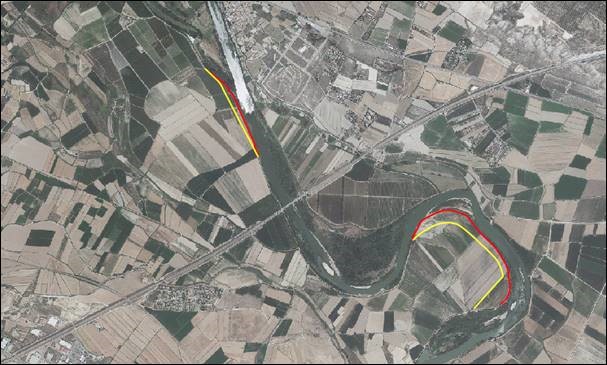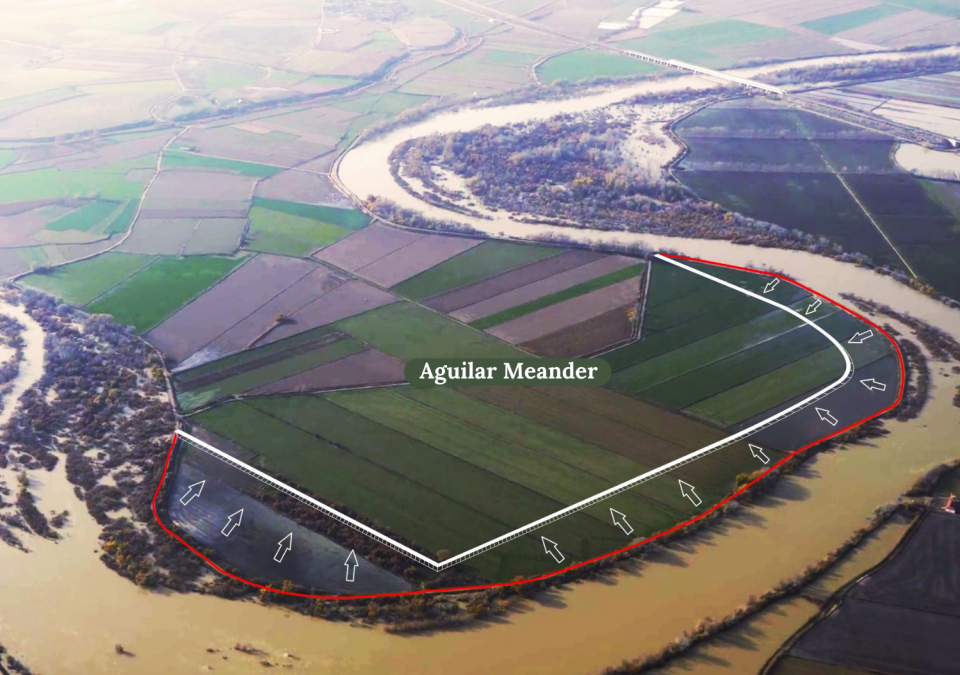The Third Vice-President of the Government and Minister for Ecological Transition and the Demographic Challenge has authorized the Public Information of the project “Improving flood resilience in the Ebro River, as it passes through Osera de Ebro and Fuentes de Ebro, in Zaragoza. Phase 1”, integrated in what is called Zone 2 of the LIFE Ebro Resilience P1 Project..
During the next 20 working days, observations, comments or allegations may be submitted regarding the planned actions. It is important to highlight that in the scope of the LIFE Ebro Resilience P1 Project, from the definition phase of the actions, stakeholders and local population have been integrated through stable participation channels.
These are forums in which proposals and contributions are continuously presented and discussed, and all participants are kept informed of progress. In the case of this section, through three groups called co-creation and which is formed by technicians, farmers, members of associations, environmental educators, ecologists, etc.,
This first phase, with a budget of 2,946,338.68 €, consists of a morphological adaptation of the Ebro river in two places, the mejana del Conde and the meander of Aguilar. The objectives are, in general, to reduce the effects of flooding and to improve the ecological condition of the riverbed. In order to achieve these objectives, the following interventions have been planned:
- Narrowing of the river channel will be eliminated, recovering its drainage capacity during floods.
- Deterioration will be prevented and the state of the aquatic, terrestrial and wetland ecosystems present and potentially existing will be improved, recovering 14 hectares of land as river space, which will subsequently be environmentally restored in subsequent actions of the LIFE Ebro Resilience P1 Project, and eliminating exotic plant species.
Interventions
In order to reduce the narrowing and recover river space, the main actions consist of recessing the defenses, moving them away from the riverbed.
- Removal of a 1,020 m long section of the current defense dike in mejana del Conde and construction of a new section of recessed defense for a length of 998 meters.
- Removal of a section of the current defense dike in the Aguilar meander for a length of 2,035 meters and construction of a new section of recessed defense in this meander for a length of 1,665 meters.
The material from the recessed defenses will be used in the construction of the new levees.
In addition, environmental adaptation will be carried out:
- The land will be conditioned over an area of approximately 3 hectares in the mejana del Conde and 12 hectares in the meander of Aguilar, to facilitate the environmental restoration of the recovered fluvial space and the reconnection of the river with the adjacent woodland.
- The riparian vegetation will be recovered, with the elimination of 1.3 hectares of common reed (Arundo donax), the main invasive exotic species in the area, in addition to the invasive exotic trees, such as American maple(Acer negundo), and allochthonous trees such as mulberry(Morus alba), three-thorn acacia (Gleditsia triacanthos) and tree of paradise (Elaeagnos angustifolia), scattered and adjacent to the sections of the levee to be removed. The environmental adaptation will be carried out by the Government of Aragon at a later date.
The project includes environmental monitoring, with faunal surveys and the replacement of affected services, such as roads, irrigation ditches and power lines.

Phase 2
In the Osera de Ebro – Fuentes de Ebro (Zaragoza) section, a second phase will be added, where one of the most innovative interventions of the LIFE proposal is proposed: the creation of so-called buffer zones for lateral flows.
These buffer zones will compartmentalize agricultural properties into cells that will be pre-flooded in a controlled manner during flood episodes, generating water cushions that will minimize damage to farms and infrastructure.

